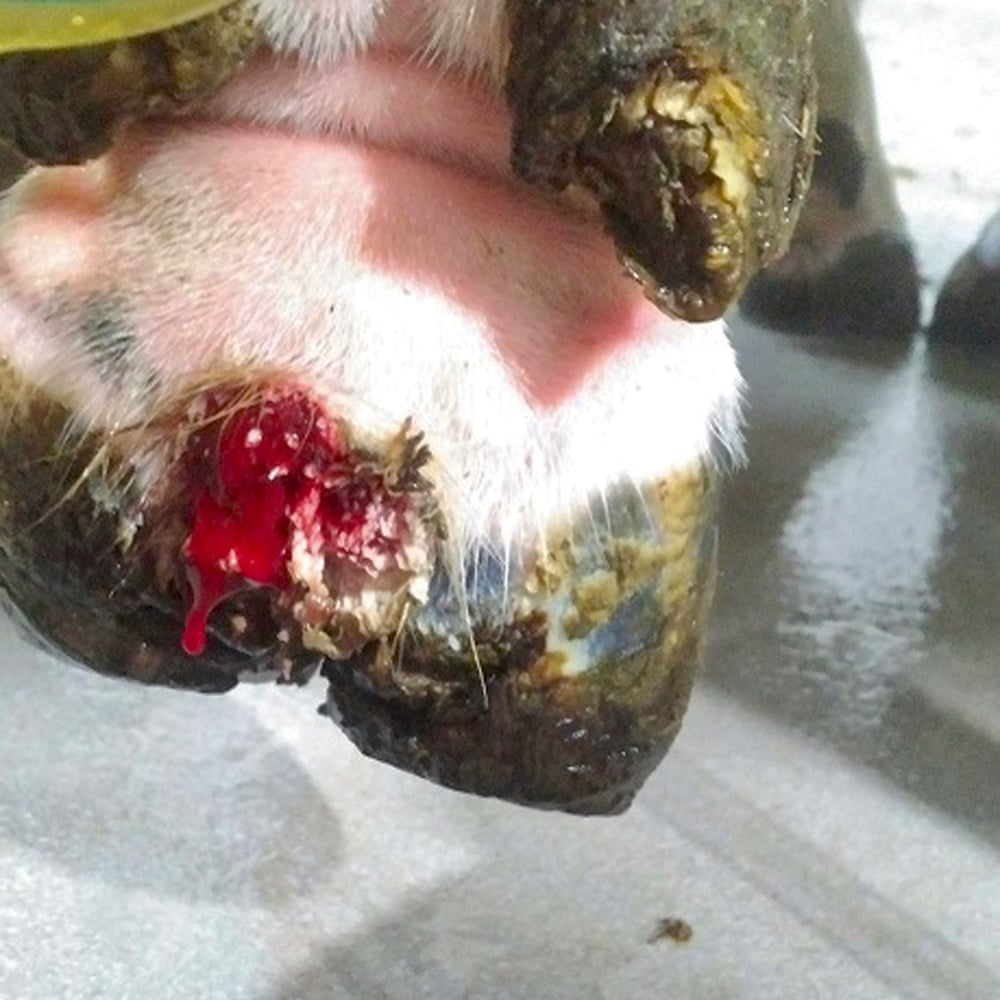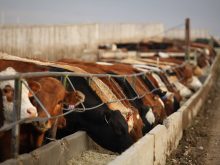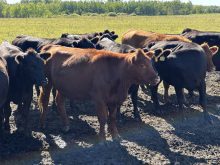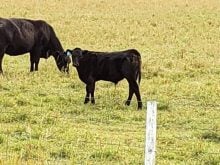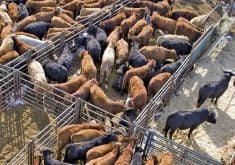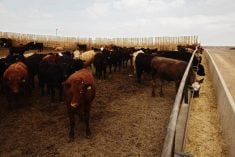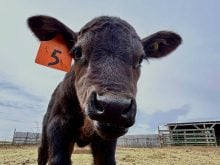About five years ago I worked with a 350-dairy cow operation with a significant hairy heel wart (HHW) problem. At the time, this dairy manager often had a series of lame lactating dairy cows at different stages of this disease.
The foot problem was affecting feed consumption, milk production, reproduction and the general well-being of the herd. Slowly, he started to take steps to treat the most insidious cases, and moved on to implement a good HHW prevention plan which most farmers could adopt. Today, he only needs to treat the odd case.
One of the things that the producer told me is early detection of HHWs is the key to controlling the future cases in his barn.
Read Also

Harvest wraps up and fall work begins
At the Eppich famly ranch in western Saskatchewan, the fall harvest was successful with few breakdowns, cows and calves have been sorted and a new tractor has arrived
The accompanying photo shows one of his distressed cows in the early stages of hairy heel warts, which is literally a raw hole prone to bleeding when broken open (strawberry warts). As these growths mature, they become larger (two-centimetre) lesions with hair-like projections that give hairy heel wart its name.
This producer often spots strawberry warts at milking time in the parlour. He notes the cow’s ear tag number and then later segregates her and other cases. Their affected hooves are washed with a mild disinfectant and rinsed with clean water. About 20 grams of an antibiotic powder is applied and the hoof is wrapped with an elastic bandage. After a few days, this wrap falls off and these once-limping animals seem to be walking around and up to the feed bunk as if nothing ever happened.
These practical topical treatments held in place with a bandage are not condoned by some dairy specialists. The elastic bandage does not allow the foot to “breathe.” As a result, there can be a high reoccurrence of HHW and need for retreatment.
Footbaths can help
Most will agree that footbaths with dissolved copper sulphate are not an effective treatment for HHWs, but they can be a good preventative first line of defence in this lactating dairy barn and most others.
In this 350-cow situation, this producer operates a split free-stall barn with about 170 fresh cows and first-calf heifers on one side and the remaining mid- and late-lactating mature cows on the other. One 300-litre weekly footbath is set up on each side-end of the barn and the cows are run through it for two to three milkings, after which the bath solution is disposed.
His footbaths are prepared by adding 15 kg (33 lbs.) of acidified copper sulphate to 300 litres of water in each durable plastic tray to make up a recommended five per cent final solution. In addition, each footbath is tested with pH strips in order to achieve a final pH of three. Such low acidity ensures that a higher concentration of copper sulphate goes into solution and achieves better hoof protection.
Proper nutrition and good sanitation
In a similar way, I believe that good nutrition is also good preventative medicine against HHWs by making the dairy cows’ skin around their hooves healthier and the hoof horn harder. So I did instruct this dairy producer to add four grams per head per day of zinc methionine to his lactation dairy premix, which in turn was added to his daily milking TMR. After seven months of zinc additions, the condition of the skin around the hooves and general hoof hardness of the cow herd were strengthened, but a definite connection in reducing the incidence of HHW in the lactating cow population cows remained inconclusive.
One thing that proved to be a bonus against HHW this summer was upgrading the good sanitation practices in this barn. This was done in two ways: new rubber flooring with a diamond-groove pattern, and a new scraper system was installed on each side of the split free-stall barn. Plus the new scraper system was run through the alleys more frequently. As a result, the lactating cows’ hooves were notably cleaner, which helped decrease HHW to a couple of cases per month.
Such progress revisited over the last five years against hairy heel warts is an excellent honour. It shows that HHW was a significant problem and at the present is endemic (meaning HHW is still present, but controlled), which is due to this dairy producer’s quick lameness diagnosis and rapid effective treatment, yet above all, a good preventative HHW plan.


